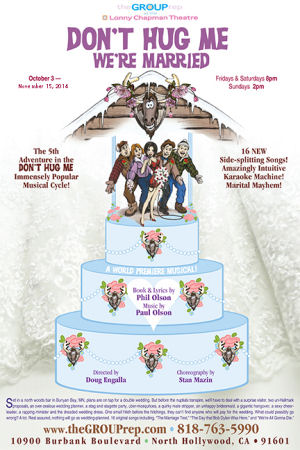
 Back in August, when I was planning my theatre for October (you can stop laughing now), I noticed a period where my wife would be out of town and I had no theatre booked. “Aha!,” said I, “This is a perfect time to book something my wife might not like.” It turns out I was wrong. Yes, I booked a silly show in a series I had long heard about but never attended. However, it turns out that my wife would completely enjoy it. Luckily, it runs until mid-November, so perhaps she can squeeze it in. By now, you’re probably curious about the show’s identity. Last night I went to the Group Rep (FB) in North Hollywood to see the fifth show in Phil and Paul Olson’s long running “Don’t Hug Me” (FB) series: “Don’t Hug Me, We’re Married“, featuring Book and Lyrics by Phil Olson (FB), and Music and Orchestrations by Paul Olson (FB).
Back in August, when I was planning my theatre for October (you can stop laughing now), I noticed a period where my wife would be out of town and I had no theatre booked. “Aha!,” said I, “This is a perfect time to book something my wife might not like.” It turns out I was wrong. Yes, I booked a silly show in a series I had long heard about but never attended. However, it turns out that my wife would completely enjoy it. Luckily, it runs until mid-November, so perhaps she can squeeze it in. By now, you’re probably curious about the show’s identity. Last night I went to the Group Rep (FB) in North Hollywood to see the fifth show in Phil and Paul Olson’s long running “Don’t Hug Me” (FB) series: “Don’t Hug Me, We’re Married“, featuring Book and Lyrics by Phil Olson (FB), and Music and Orchestrations by Paul Olson (FB).
Ads for the show describe it as follows:
“Set in a north woods bar in Bunyan Bay MN, plans are on tap for a double wedding. But before the nuptuals transpire, we’ll have to deal with a surprise visitor, two un-Hallmark proposals, an over-zealous wedding planner, a stag and stagette party, uber-mosquitoes, a quirky male stripper, an unhappy bridesmaid, a gigantic hangover, a sexy cheerleader, a rapping minister, and the dreaded wedding dress. One small hitch before the hitchings, they can’t find anyone who will pay for the wedding. What could possibly go wrong?”
What this doesn’t say is that all of the above takes place with a cast of 5.
When the show ended, I kept hearing the same word from others in the audience: “cute”. Indeed, about 10 minutes into the show, that was my one word summary: “cute”. This show is not high art — I don’t think it was intended to be high art (in fact, Phil seems to imply that was the intent in this interview). The songs and dances related to the plot, but they weren’t memorable and at times seemed to stick out (although they were well performed). The plot itself was very humorous, although it wasn’t a joke-a-minute-fest, and some of the recurring gags recurred a little too much. But that’s what this show was: cute humor for small casts; not high art but definitely entertaining. Art snobs wouldn’t like it, but audiences would enjoy it. It wasn’t “donuts for dinner” (as defined in “[title of show]“), but it wasn’t a gourmet meal either. It was Applebees, ummm no, it was Cracker Barrel. A filling meal, a tasty meal, a meal you enjoy when you eat it even if the surrounding are a bit corny…. but a meal that you didn’t choose because of the nutrition.
But on the way home a realization hit me: Although the presentation was a little corny, the underlying subject wasn’t — in fact, the underlying subject was something I had just been thinking about. Let me explain. My favorite little theatre, Repertory East (FB), loves to do a lot of fundraisers where you dress up: tux, tails — in fact, next week they are doing a full costume event (FB). I never go to these. I rarely get dressed up (the last time I wore a tux was my wedding); I never go out dancing. I don’t bring my wife flowers or do the spontaneous romance. In other words: I’m just like Gunner in this show. I’m not a romantic. On the other hand, my wife is like Clara. She’d love the romantic gesture (once she picked herself off the floor). She’s probably silently disappointed in my lack of romance. Yet we both love each other dearly — just like Gunner and Clara do in this show. On the other hand, there are couples just like Bernice and Aarvid in this show: couples deeply in love, who will make any gesture to show it. They wear their love on the outside; they have the courage to express it and it just shines away.
Although this show has a cotton-candy exterior, at its heart it is appealing simply because people see themselves in it. They see themselves so much they just start cheering for the characters. You want these characters to end up happy. It is this tender and sentimental heart that makes this show work. So what if an intuitive karaoke machine provides silly music with a look and a nod. So what if you suspend your disbelief when the dances come out and the singing starts. That’s the nature of this beast, don’tcha know.
The basic plot of the show is this: On the one side, you have Clara and Gunner: married for 20 years with the typical long-married blues. They are having a contest on who can be the better spouse. On the other side is Bernice, who has just decided to marry Aarvid. This upsets Kanute, who wants to marry Bernice. Thrown into the mix is Trigger (who is played by the same actor who plays Gunner, but in female clothing, explaining why the two are never seen in the same place at the same time and a number of other wink wink nudge nudge jokes — a running joke), who wants to marry Kanute. A double wedding is arranged, with predictible sitcom results and outcomes. This basic story, as I’ve noted before, is cute and sitcomish, but it is fun to watch.
The songs and accompanying dances range from silly to, ummm, sillier. None of the songs stick with you afterwards, although a number are very cute (there’s that word again): in particular “The Day That Bob Dylan Was Here”, “It’s All Comin’ Together” (notable for the clever passage of time), and the “Bunyan Bay High School Fight Song”. There was one number that truly made me suspend disbelief titled “We Are Gathered Here Today”, but I won’t spoil the twist.
One last note on the show itself: I fear that this series may depend too much on people knowing the recurring jokes and motifs from the previous episodes. In fact, if you read the synopsis of the past shows on the series website, you’ll see that all of the plays involve the same five characters in different situtations. That’s great if you’re a fan of the series; it makes it harder to get into if you’re thrown into the latest incarnation without knowing the backstories and relationships that underlie some of the humor. Essentially, this is a musical sitcom on stage: the first show or two introduced you to the characters in depth, but the rest build upon your prior knowledge of these characters and their quirks. If you come into the show in the middle, it takes a while to warm up, and sometimes you wonder why people are laughing. Multi-part stories rarely work in the theatre; when they do, they are designed to also work as standalone pieces (Neil Simon’s Brighton Beach trilogy is an example of that, as are August Wilson’s works). Pure sequels (cough, Annie 2, cough, Bring Back Birdie) often don’t work as well, but usually that is because they try to repeat the same jokes and structure as the original. Having not seen the earlier incarnations, I can’t assess how much of that is the case for this play (but it surely seems to be based on the other play’s synopses).
The performances were very good. I was particularly smitten by both female leads: Truett Jean Butler (FB) as Bernice and Rebekah Dunn† (FB) as Clara. Butler just had some quality that drew me to her — I don’t know if it was her face, her expressions, her emotions — but my eye was just drawn to her character. Similarly, Dunn had that weary long married look of exasperation I know so well :-); and she had a completely different look in the second act when she let her hair down that gave the real demonstration of how love endures in a long term marriage. As my wife says, “Divorce never, murder frequently”. Both had good singing voices but came across a tad week — I think that was more the nature of the songs and the orchestrations than anything else. It would be interesting to see them in a caberet performance.
(†: In previous shows, this actor appears to have been credited as Rebekah Brown Czarnecki)
The male performers were equally strong — in particular Don Schlossman (FB) in his dual roles as Gunner and Trigger (which must be exhausting). Bert Emmett (FB) was good in his comic relief role as Kanute. Lastly, Troy Whitaker (FB) gave off a lovely boyish naive charm as Aarvid. Again all sang well but not strong due to the nature of the songs.
The direction, by Doug Engalla (FB) assisted by Natalia Santamaria (FB), worked reasonably well to make the characters as believable as possible given the story and the setup. The dance, under the choreography of Stan Mazin (FB), seemed simple. On the one hand, these are supposed to be patrons and owners of a backwoods bar in Minnesota — you’re not going to be seeing anything fancy there (unless it is with a moose). On the other hand, however, the simplicity of the dance and the nature of the movement made the songs stand out that much more: they became more like novelty numbers than seemlessly integrated. I can’t help but wonder if a different approach to the movement might have made the songs fit in a little better. Perhaps not. It could just be that is the nature of this particular beast. They do grow them strange in the back woods.
Turning to the technical side: The set design by Chris Winfield (FB) evoked the backwoods bar well; evidently, there were hidden homages to the past instances of the series. In any case, it was a well done set. This combined with costumes by Jocelyn Finn that again evoked backwoods Minnesota well, including some cute costumes for Trigger and Bernice. Steve Shaw (FB)’s sound design provided appropriate sound effects, although the music itself was a bit electronic. The lighting design by J. Kent Inasy was simple and mostly, umm, white; no particular instance of using light to create or enhance mood stands out to me. The show was produced by Laura Coker (FB).
There’s one other technical credit I want to call out: Nora Feldman, who did public relations. Nora didn’t get me to this show; in fact, by the time she sent me the press release I already had tickets for the show (for some reason, I’m on a number of lists for theatre press release). Nora did, however, respond to me when I asked if she could coordinate a ticket donation for the upcoming MoTAS Charity Golf Tournament, and that enabled me to meet Bert Emmett, the President of the Group Rep Board of Directors. I had a delightful conversation with Bert after the show about theatre and such. So I thank Nora and Bert: both for making the donation (for which MoTAS thanks you), and for taking the time to talk to me (which I appreciate).
“Don’t Hug Me, We’re Married” continues at the Group Rep (FB) until November 15. Tickets are available through the Group Rep (FB) box office, and discount tickets may be available on Goldstar or LA Stage Tix. The remainder of the Group Rep (FB) season looks interesting: the farce “Don’t Dress for Dinner” (December 12, 2014-January 25, 2015); “Tiger by the Tail” (March 6-April 9, 2015), “Love Again” (a set of three mini-musicals) (May 15-June 28, 2014), and “Lombardi” (July 24-September 6, 2015). I particularly want to see that last show, “Lombardi“.
[Ob. Disclaimer: I am not a trained theatre critic; I am, however, a regular theatre audience. I’ve been attending live theatre in Los Angeles since 1972; I’ve been writing up my thoughts on theatre (and the shows I see) since 2004. I do not have theatre training (I’m a computer security specialist), but have learned a lot about theatre over my many years of attending theatre and talking to talented professionals. I pay for all my tickets unless otherwise noted. I believe in telling you about the shows I see to help you form your opinion; it is up to you to determine the weight you give my writeups.]
Upcoming Theatre and Concerts: October currently has two shows remaining: “Pippin” at the Pantages (FB) on 10/25, and the Los Angeles Symphonic Winds (FB) at Calabasas High School on 10/26 (follows by the MoTAS Golf Tournament the next day at the Calabasas Country Club). November is back to busy, with “Big Fish” at Musical Theatre West (FB) on Sat 11/1, “Handle with Care” at The Colony Theatre (FB) on Sun 11/9 (shifting to avoid ACSAC and opening night), a trip out to Orange Empire Railway Museum to see my buddy Thomas on 11/11, “Sherlock Holmes and the Suicide Club” at REP East (FB) on Sat 11/15, the Nottingham Festival on Sun 11/16, and “Kinky Boots” at the Pantages (FB) on Sat 11/29. I may also see some theatre when I visit my daughter Erin in Berkeley between 11/20 and 11/26. Right now, I’m looking at “The Immigrant“ at Tabard Theatre (FB) in San Jose, “Harvey” at Palo Alto Players (FB) in Palo Alto, or “Rhinocerous” at the UC Berkeley Theatre Department (FB). As for December, right now I’m just holding one date: “She Loves Me” at Chance Theatre (FB) in Anaheim on 12/20. Right now, there is only one show booked for January 2015 – “An Evening with Groucho” at AJU with Frank Ferrente. As always, I’m keeping my eyes open for interesting productions mentioned on sites such as Bitter-Lemons, and Musicals in LA, as well as productions I see on Goldstar, LA Stage Tix, Plays411.


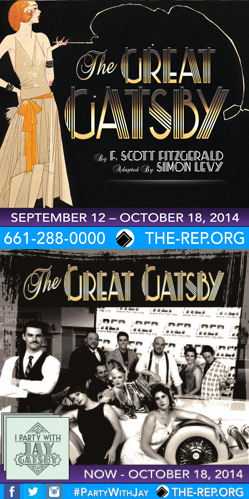
 This has been a weekend for relationship problems. Earlier this morning I wrote about some relationships in flux in Atlanta in 1973; these were portrayed on stage in
This has been a weekend for relationship problems. Earlier this morning I wrote about some relationships in flux in Atlanta in 1973; these were portrayed on stage in 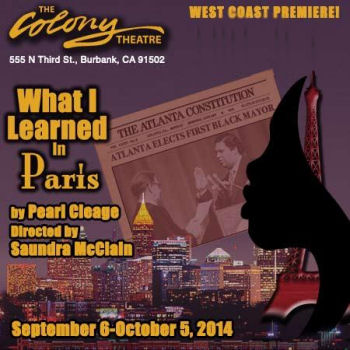
 If there is a problem in the theatre today, it is the makeup of the audience. Go to most shows, and you’ll see the same type of audience — older, white, and typically better suited financially. None of these are particularly surprising, given who was trained to attend theatre when they were younger (i.e., in the 1950s and 1960s). Some theatres, playwrights, and artistic directors know how to change that — and I’m thinking of folks like Sheldon Epps over at the Pasadena Playhouse. They’ve mastered the art of the “black play” — that is, a play with something that draws out the African-American audience to the theatre. I’ve written before about how I believe this is a good thing — how, in fact, I wish that the audience for theatre in general was more reflective of society’s makeup. I’ve
If there is a problem in the theatre today, it is the makeup of the audience. Go to most shows, and you’ll see the same type of audience — older, white, and typically better suited financially. None of these are particularly surprising, given who was trained to attend theatre when they were younger (i.e., in the 1950s and 1960s). Some theatres, playwrights, and artistic directors know how to change that — and I’m thinking of folks like Sheldon Epps over at the Pasadena Playhouse. They’ve mastered the art of the “black play” — that is, a play with something that draws out the African-American audience to the theatre. I’ve written before about how I believe this is a good thing — how, in fact, I wish that the audience for theatre in general was more reflective of society’s makeup. I’ve 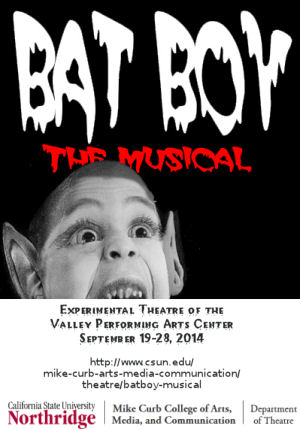
 When I told people that I was going to go see “Bat Boy: The Musical“, most thought I was going to see a musical about Batman. After all, there have been musicals about
When I told people that I was going to go see “Bat Boy: The Musical“, most thought I was going to see a musical about Batman. After all, there have been musicals about 
 I’ve written before about how much I enjoy farce. Be it “Lend Me a Tenor” at the Pasadena Playhouse back in 1992,
I’ve written before about how much I enjoy farce. Be it “Lend Me a Tenor” at the Pasadena Playhouse back in 1992, 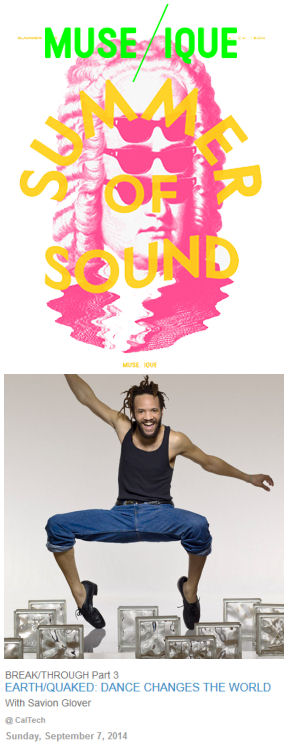

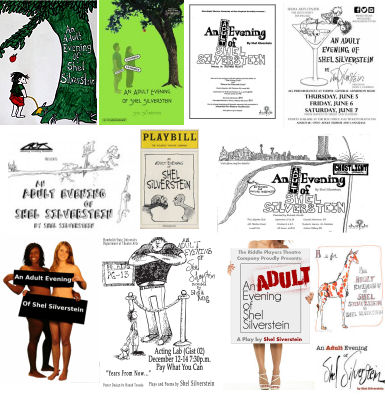 Before I start describing the ten scenes and the performances therein, a few notes from the research I did to write this write-up. As I noted, a lot of theatres have presented this play, and it is interesting to see how they have adapted Shel’s child-oriented artwork to attract the adult market. I’ve captured a few examples to the right. These show that the licensing doesn’t provide an image for the show. The most common image seems to be an adaptation of “The Giving Tree” (his best known work); most seem to imply a heavily sexual nature to the show. Most seem to be designed to discourage children, demonstrating that Shel’s current association is with his children’s books. I’ll note the Playbill in the center is from the original Atlantic production. So how “adult” is this show? Will it scare the horses? There’s a fair amount of adult language in the show, but no actual nudity (there was more nudity on stage in Frankie and Johnny or The Graduate). Although in one scene the language may be a bit raunchy, most of the language is stuff that kids over 12 these days know from the playground or pay-TV. What is adult in this show are the concepts. There are notions and ideas in this show that will fly right past a child; they won’t see the humor and they won’t get the point. Those familiar with Shel’s adult work know that he used shock and strong images to make significant points about society. It is those ideas that make this show wrong for kids.
Before I start describing the ten scenes and the performances therein, a few notes from the research I did to write this write-up. As I noted, a lot of theatres have presented this play, and it is interesting to see how they have adapted Shel’s child-oriented artwork to attract the adult market. I’ve captured a few examples to the right. These show that the licensing doesn’t provide an image for the show. The most common image seems to be an adaptation of “The Giving Tree” (his best known work); most seem to imply a heavily sexual nature to the show. Most seem to be designed to discourage children, demonstrating that Shel’s current association is with his children’s books. I’ll note the Playbill in the center is from the original Atlantic production. So how “adult” is this show? Will it scare the horses? There’s a fair amount of adult language in the show, but no actual nudity (there was more nudity on stage in Frankie and Johnny or The Graduate). Although in one scene the language may be a bit raunchy, most of the language is stuff that kids over 12 these days know from the playground or pay-TV. What is adult in this show are the concepts. There are notions and ideas in this show that will fly right past a child; they won’t see the humor and they won’t get the point. Those familiar with Shel’s adult work know that he used shock and strong images to make significant points about society. It is those ideas that make this show wrong for kids.
